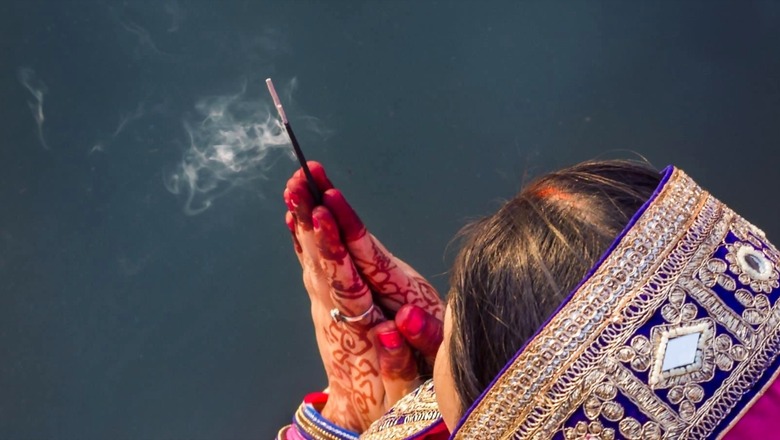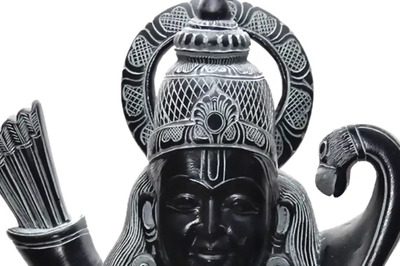
views
They say “India is a secular nation” and rightly so. Secularism, per se, has always been embedded in our culture since time immemorial. Long before the term “secular” was added to our Constitution—through 42nd Amendment of the Constitution enacted in 1976—or perhaps even before the term was coined, the epicenter of India’s cultural identity were ‘the temples’ and palpably that is why they were brutally yet systematically ransacked by the Mughals and later by the British. The tradition of plundering of India’s temples incessantly and unabatedly continues to date as our ‘copied’ Constitution continues to fill the void of external ‘rulers’. It is said to be inspired by constitutions from around the world, nations which had their own story of the freedom struggle, of oppression, their dynamics being completely different from India, that is Bharat. On top of that, the Indian Constitution was conceived by remarkably skilled experts, albeit unelected representatives under whatsoever political influences—a fact that prima facie warrants more deliberation and scrutiny.
As of today, even at the brink of a new world order, Indian temples continue to be marginalized, stigmatized and exploited while facing an existential danger arising out of the Constitution that has no business with Indian culture, its freedom struggle, its ancient ideas, and the grand vision India has to offer. The subsequent governments post-Independence are equal stakeholders in the decaying state of temples and the larger purpose they served—Hinduness, that is the Hindutva. Hindutva is the primordial essence of India and quintessentially, temples have shaped this country and its ideas as they were centers of education, trade, science, and judiciary in India’s glorious past.
Recently, Malaysian police arrested a man for derogatory remarks on Diwali. The United States is introducing a bill to declare Diwali a federal (national) holiday. Ironically, in India, the state government of Delhi (NCT) arrested hundreds of people for celebrating Diwali with crackers. Crackers were banned across most non-BJP states under the guise of environmental activism, which is, of course, devoid of any scientific grounds. This is similar to what other Hindu festivals also face—blatantly propagandist activism. This hints at the larger narrative—‘the persecution of Hindus through legal frameworks and state machinery.’ Non-Hindus, under the pretence of ‘minority’ and that too under a Constitution that calls itself secular, being endowed with special provisions at the altar of Hindus would be considered sacrilege in any just society. The state control over religious institutions, organizations and places of worship is one such area where all other injustices are rooted.
Temples were at the centre of India’s culture; its very soul. There were wars among local kings, change in regimes, but never was a temple attacked. In fact, the rulers ruled in the name of the deity and took care of the expenses made in favour of the temples. It all changed with the advent of Islam in the Indian subcontinent. Albeit the ‘holy book’ doesn’t grant legitimacy and validity of life to non-believers, i.e. infidels, paradoxically their cultural centers are built over the desecrated places of worship of the very pagans, or infidels. Temples were razed and mosques were erected over the ruins, and a full-scale attempt to denude Bharat of its spirituality and philosophy, embedded in the Hindutva identity, began centuries ago. The Hindu temples that continued to exist had to pay hefty taxes levied by the Islamic rulers along with Jizyah. The same pattern was followed by its sister Abrahamic cult, Christianity.
Today, various state governments in India collect 23.4 per cent tax from the temples that includes 15 per cent endowment administration tax, 2 per cent audit fees while 2 per cent goes to common goods fund. However, no such taxes are collected from mosques, churches, gurdwaras or any other religious place of worship. This violates Article 26 of the Constitution as taxes are levied on spiritual organizations. It also violates Article 27 as people are compelled to pay taxes for worship, maintenance and promotion of their places of worship. This is often legalized by constitutional provisions like Section 12AA of the Income-tax Act, 1961. This is because temples are to be managed by a trust with the government poking its nose into the functioning, administration and entire decision-making process, unlike other religions’ trusts that get a free hand.
Other religions don’t need to keep the government in the loop while they enjoy the benefits bestowed upon them by Article 25, which somehow manages to only exclude Hindus to exercise independent control over their activities to propagate Hindutva. This, in turn, turns temples into cash cows for the state, which they will continue to milk to fuel anti-Hindu activities within and beyond temples. Temples these days have VIP, MIP lines which are discriminatory and contradictory to the ethos of Hindutva. This is, of course, orchestrated by the bureaucrats and their political masters—practices like these ultimately show temples in a bad light. The state assumes the role of custodian of the donations made to the temples and ‘manages’ its utilization.
What ‘managing temple funds’ translates to in layman language is: ‘using it to fund other religions’ wants’. Furthermore, the priests who serve the temples don’t have any say in how it is managed. Often, they are persecuted by the white-collared bureaucrats, much like their predecessors who robbed the temple’s wealth. The curriculum taught in the Hindu religious institutions too falls under the scrutiny of the state and is subject to its whims and fancies. The result? Thousands of temples across India don’t have funds to perform a single puja. Their condition continues to deteriorate with no maintenance work whatsoever. The pujaris struggle to make ends meet while the government pays salary (or sugarcoats it as ‘stipend’) to the caretakers of other religions’ places of worship. The idols continue to get stolen and smuggled abroad, bringing in revenue for the political masters who intended to vilify if not successfully annihilate Hindutva.
In the first week of September 2021, a two-judge bench of Justices Hemant Gupta and A.S. Bopanna of the Supreme Court of India ruled that all temple property is owned by the presiding deity as a legal person and pujaris or the priests don’t have ownership rights.
Therefore, the state claiming the right over Hindu temples raises serious questions:
1. If temple land belongs to the deity, how can anyone including the government claim it? The stance seems paradoxical and ostensibly hypocritical when the state itself claims the rights, denying generations of the priests any rights or say.
2. Were the ruling regimes in Independent India, irrespective of the political ideologies they profess, infringing on the rights of the temple and its devotees?
3. Does this connote that the governments hitherto were not in sync with the spirit of the Constitution, and if yes, is it a constitutional failure or constitutional crisis?
4. When India is putatively a secular state at one end while the state has controlled only the Hindu temples, does this imply that the Indian state is a Hindu state with a Hindu operational nature or that the state and its administration have themselves violated the very fabric of ‘secularism’?
It is up to the people of India to decide if 1000 years of persecution of temples is long enough and if they now need to get rid of the agenda laid by barbarians, dacoits and thieves from within and outside the country.
Yuvraj Pokharna is an engineer turned educationist and social activist from Surat. The views expressed in this article are those of the author and do not represent the stand of this publication.
Read all the Latest Opinions here


















Comments
0 comment